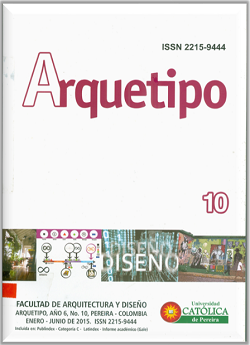Visualografia: ICT tool for knowledge transfer
Keywords:
Meaningful learning, data visualization, design principles, visual communctionAbstract
The ICT tool called Visualografía, is the product of the third phase of design research about “Theory and practice of data visualization in visual Messengers”, this in order to give an answer to the need to manage learning processes that require students for interpreting under the thematic content early use of visual communication and technology of the digital age, to achieve effective messages targeted to specific users in society; for that reason,
the information can be represented using diagrams and signs that transform the content into meaningful chromatic forms as part of the disciplinary training in Visual Communication Design. The tool was developed in a virtual environment, in the search for new interfaces in the teaching and learning processes that enable interaction with students receive theoretical and practical basics of design to the potentiation of cognitive skills to solve problems in
the environment that may inhabit as individuals. A case study was chosen from teaching practice to verify the effectiveness of ICT tools in students, using a qualitative method that showed experiential results, focused on meaningful learning styles with projection to the implementation of the tool in the discipline of Visual Communication Design.
References
Bastidas, O. (2013). Enseñanza - aprendizaje y evaluación en el ciberespacio:una nueva realidad educativa. Revista Universitaria: Docencia, Investigación e Innovación, 2, 28-44.
Cairo, A. (2011). El arte funcional. Madrid: Alamut ediciones.
Cairo, A. (2009). Infograpics and Cognition. Recuperado el 12 de febrero de 2015 de http://www.visualopolis.com
Cross, N. (2006). “Designerly ways of knowing” en Designerly ways of knowing, Springer-Verlag London Limited, UK, cap. 1, pp. 1-13.
De Benito C, B., Darder M, A., y Salinas I, J. (2012). Los itinerarios de aprendizaje mediante mapas conceptuales como recurso para la representación del conocimiento. EDUTEC. Revista Electrónica de Tecnología Educativa, Número 39. Recuperado el 24 de junio de 2015 de http://www.edutec.es/revista/index.php/edutec-/article/view/372/109
Duarte, J. (2015) Handmade Visuals [Web log post]. Recuperado el 18 de febrero de 2015 de: http://www.handmadevisuals.com/
Hay, D. B., & Proctor, M. (2015). Concept maps which visualise the artifice of teaching sequence: Cognition, linguistic and problem-based views on a common teaching problem. Knowledge Management & E-Learning, 7(1), 36–55.
Lévy, P. (1999) ¿Qué es lo virtual?: “La inteligencia Colectiva en la inteligencia personal”. Barcelona, España: Ediciones Paidós Ibérica.
Lévy, P. (1992). Le tecnologie dell`intelligenza, Synergon Boloña.
Lupton, E.,& Phillips, J. C. (2014). Graphic Design the New Basics. ChronicleBooks.
Salinas, J.; de Benito, B. y Darder, A.. (2011). Los mapas conceptuales como organizadores del proceso de enseñanza-aprendizaje: los itinerarios de aprendizaje. Revista Electrónica de Investigación e Innovación Educativa y Socioeducativa , V.3, n. 1, 63-74. Recuperado el 18 de junio de 2015 de: http://www.in.uib.cat/pags/volumenes/vol3_num1/salinasyotros/index.html
Scolari, C. (2004). Hacer clic. Hacia una sociosemiótica de las interacciones digitales. Barcelona, España. Gedisa editorial.

